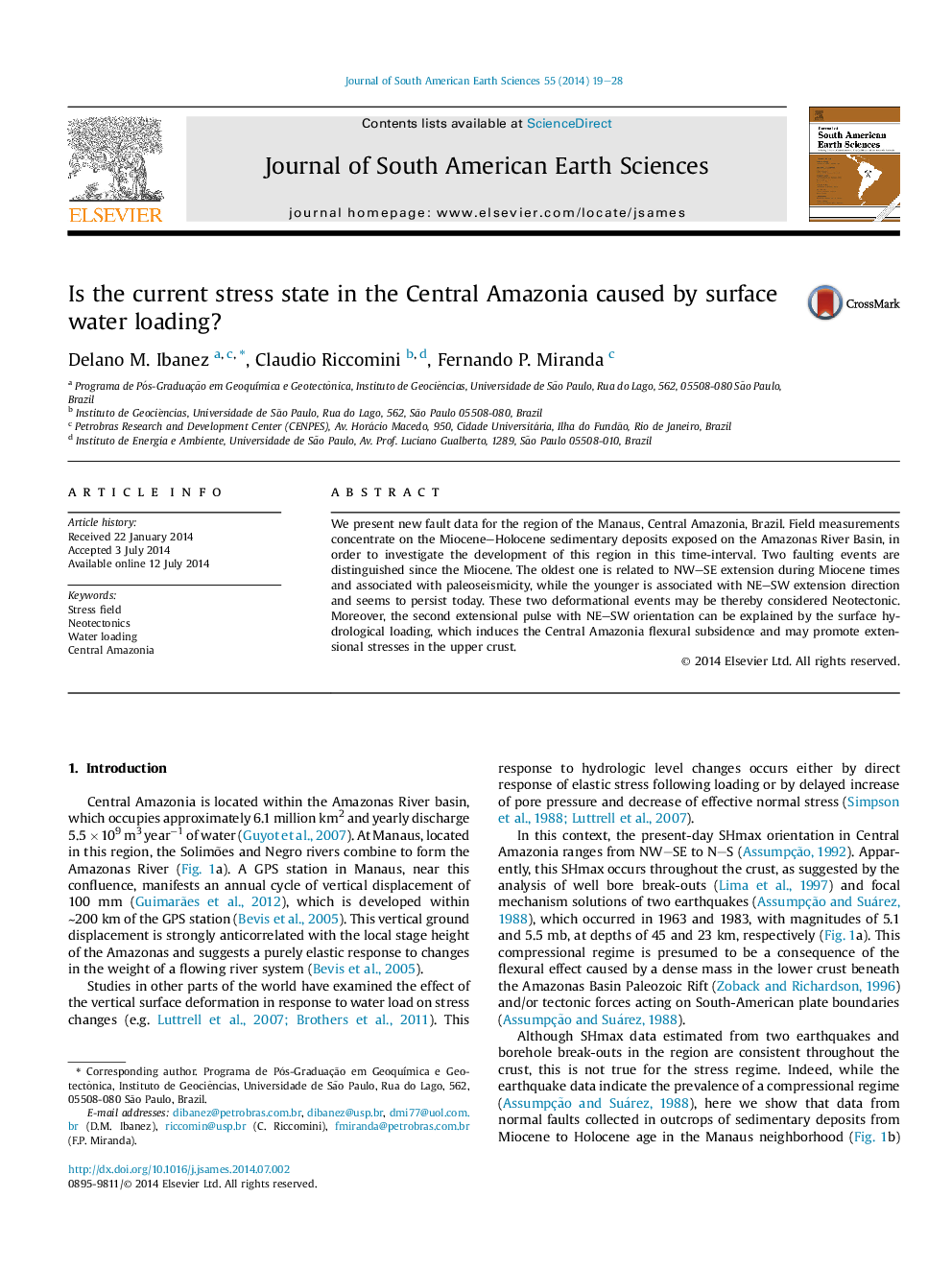| Article ID | Journal | Published Year | Pages | File Type |
|---|---|---|---|---|
| 4682297 | Journal of South American Earth Sciences | 2014 | 10 Pages |
•Normal faults in the Manaus neighborhood characterize two extensional regimes.•NE-striking faults indicate NW-oriented extension during the Miocene.•NW-oriented faults show NE–SW extension and seem to persist today.•Present-day extensional regime is explained by the seasonal hydrological loading.
We present new fault data for the region of the Manaus, Central Amazonia, Brazil. Field measurements concentrate on the Miocene–Holocene sedimentary deposits exposed on the Amazonas River Basin, in order to investigate the development of this region in this time-interval. Two faulting events are distinguished since the Miocene. The oldest one is related to NW–SE extension during Miocene times and associated with paleoseismicity, while the younger is associated with NE–SW extension direction and seems to persist today. These two deformational events may be thereby considered Neotectonic. Moreover, the second extensional pulse with NE–SW orientation can be explained by the surface hydrological loading, which induces the Central Amazonia flexural subsidence and may promote extensional stresses in the upper crust.
